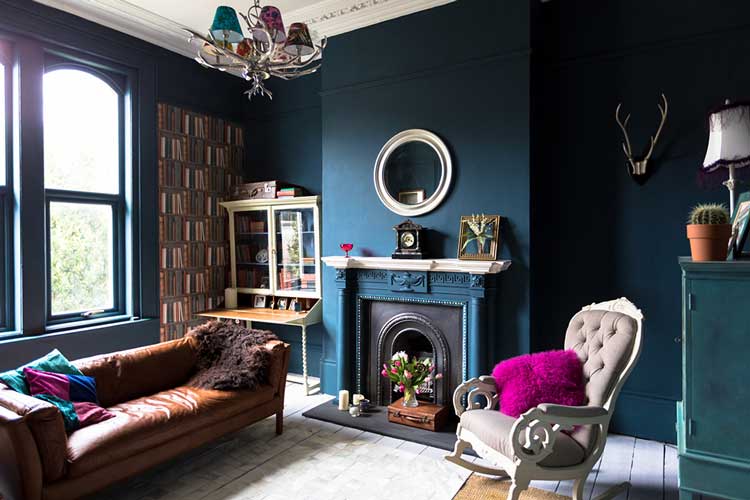Last updated November 2024

Does decorating your home—furniture, floors, wallpaper, artwork, etc.—overwhelm you? Do you want someone else’s design ideas or access to wholesale showrooms and more furniture choices? You might want to hire an interior designer.
You can find a decor pro at a furniture store or hire an independent one. They could work on one room or tackle your whole house, from developing a design concept to purchasing and supervising installation of the furnishings. Or you can hire some designers for two- or three-hour consultations to provide new ideas and perspectives.
Even if you pay a designer for the full job, you can remain involved, meeting with them regularly to review plans, fabric samples, proposed furniture pieces, and more.
The cost of hiring a fully trained independent designer to redo a living room (including furniture plus design fee) is typically more than $20,000. But it can cost considerably more or less depending on room size, quantity and quality of items purchased, and the designer’s fee structure. Although some independent designers won’t accept clients who aren’t prepared to spend in this range, others are willing to work with more limited budgets. Most understand you might want to plan now and spread out actual purchases over many months.
Some store-based designers offer limited service, but others do more, from drawing floor plans to advising on color. What and how you pay varies. Some retailers charge you a small design fee, refundable if furniture purchases exceed a certain amount. Other stores may charge an hourly rate or a flat fee for a consultation plus additional hourly fees for other tasks, like writing up purchase specs.
Independent designers also use a range of payment structures. A few charge no explicit fee but retain the difference between their discounted price for your furnishings and the “retail” price—typically double what they’ve paid. More commonly, designers charge a flat or hourly fee, and may also add a markup to the items purchased.

Because the client pays one way or another, we favor hiring designers for a flat fee or hourly rate. This makes the cost clear, doesn’t incentivize overspending, and avoids trouble if you shell out less than they anticipated.
Despite the discounts designers get, when you buy through one you’ll probably spend more than if you bought the same products at one of the area’s best-priced stores.
To get the most for your money from a designer, choose carefully. Start with recommendations from friends whose taste you like, from homeowners whose furnishings you admire on house tours online, in local magazines, or via Houzz.com. Though Houzz.com allows businesses to pay to be listed, so many designers use it that it almost acts as an online “catalog” if you’re just hunting for someone able to execute a certain look or style in your area. Also check the customer reviews here at Checkbook.org.
You can also receive referrals from the American Society of Interior Designers (ASID). ASID membership is a meaningful credential. Full “Professional Practitioners” must pass the National Council for Interior Design Qualification (NCIDQ) certification exam or the Architect Registration Exam (ARE); both tests are rigorous and only designers who have met educational and professional benchmarks can sit for them. The NCIDQ is a three-part exam; the ARE is a four-part test; both ask hundreds of questions. Pass rates for both exams average only about 50 percent. Other levels of ASID membership require numerous hours in the field or hours of education.
Meet with any designer you’re considering. Talk about your lifestyle, needs, and tastes. If you don’t feel comfortable talking with them about budget and occasionally rejecting their suggestions, they’re not for you. Ask to see samples of their work—either photographs or, better still, actual homes.
Be specific about your total budget and discuss—and negotiate—the designer’s fees.
Finally, write a letter of agreement spelling out the specific services the designer will perform (which rooms will be furnished, whether shopping is included, and whether tradespeople will be supervised), how fees will be calculated, and whether the designer will get a percentage of the actual price paid for purchased items.

Most designers now work via e-design, sending out mockups of rooms and suggestions for purchasing items via email. Some local designers do this in addition to traditional in-person work.
You can also work with online-only design services like Decorilla.com, Havenly.com, or Spacejoy.com. Most work on a by-room basis, with costs ranging from $99 a room (for a simple plan with renderings and one-on-one assistance from Havenly) to $849 for “gold” level service from Decorilla (two plans from two designers with 10-plus years of experience each).
Online-only design services mostly work like this: Take a design quiz pinpointing rooms and styles you like, get matched with a few designers and choose one. Send photos of your space or set up a video call to discuss. In return, within a few days or a week or two you’ll receive design renderings, suggestions for products, and advice on painting, wallpaper, and lighting.
Still, in many cases you’re getting a less-experienced designer (some with no credentials other than a purported sense of style) and no help in executing their plans. (Part of what you pay a designer for is their access to quality wallpaper hangers, furniture restorers, etc.) But if you’ve got design savvy and DIY skills, these sites might be a less-expensive choice.


